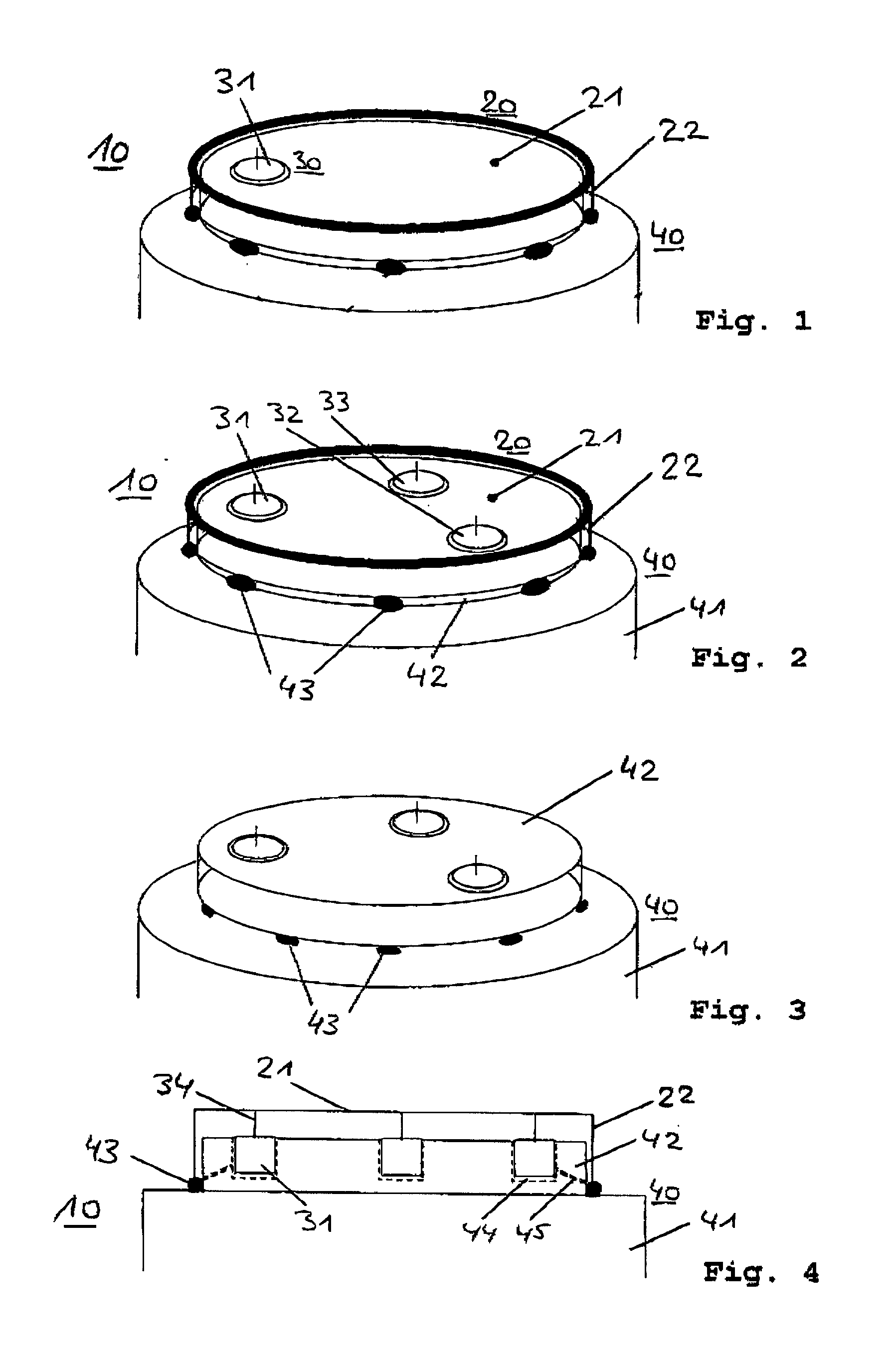Procedure and device for acoustically detecting microparticles
a technology of acoustically detecting and microparticles, applied in the direction of optical radiation measurement, mechanical vibration separation, instruments, etc., can solve the problems of inability to visually check the function of a dispenser, qualitatively or quantitatively, and the dispenser head must be repeatedly moved
- Summary
- Abstract
- Description
- Claims
- Application Information
AI Technical Summary
Benefits of technology
Problems solved by technology
Method used
Image
Examples
first embodiment
[0027] The first embodiment mentioned above (particle recording) of the detector 10 according to the invention is diagrammatically shown on FIG. 1. It comprises an oscillation target 20 with a flat sensor material 21, a sound converter 30 and a carrier 40. The flat sensor material is formed by a clamped-on sensor film. Use of the sensor film is not a compulsory feature of the invention. As an alternative, another layer or volume material can be provided to form a free surface as the target for the microparticles. The free surface is preferably larger than the typical lateral expansion of the dispenser on the dispenser head. However, the sensor film is preferred in this embodiment and the ones described below due to the relatively low running speeds of excited acoustic waves. Preferably, the sensor film (or sensor foil) has a thickness in the range below 100 .mu.m, preferably below 20 .mu.m. With decreasing film thickness the sound velocity (running speed of acoustic waves) decreases...
second embodiment
[0047] In addition, the sound converter 30 according to the aforementioned second embodiment can also consist of a combination of microphones and reflector elements at the edge of the sensor film 21, through which the corresponding paths from the impact positions to the microphone are defined. Finally, the design of the detector can also be modified relative to the used materials, shape and size of the sensor film. As an example, the sensor film can consist of a piezoelectric material. The thickness of the piezoelectric material preferably is in the range below 100 .mu.m, e.g. 20 .mu.m. The sound converters are formed by metallic layers being connected with the above data acquisition circuitry via electrical lines. The metallic layers are deposited in predetermined regions according to the positioning of the above microphones on one or both sides of the film. The deposition is preferably made by a lithographic procedure. This embodiment has the following particular advantages. The s...
PUM
 Login to View More
Login to View More Abstract
Description
Claims
Application Information
 Login to View More
Login to View More - R&D
- Intellectual Property
- Life Sciences
- Materials
- Tech Scout
- Unparalleled Data Quality
- Higher Quality Content
- 60% Fewer Hallucinations
Browse by: Latest US Patents, China's latest patents, Technical Efficacy Thesaurus, Application Domain, Technology Topic, Popular Technical Reports.
© 2025 PatSnap. All rights reserved.Legal|Privacy policy|Modern Slavery Act Transparency Statement|Sitemap|About US| Contact US: help@patsnap.com


